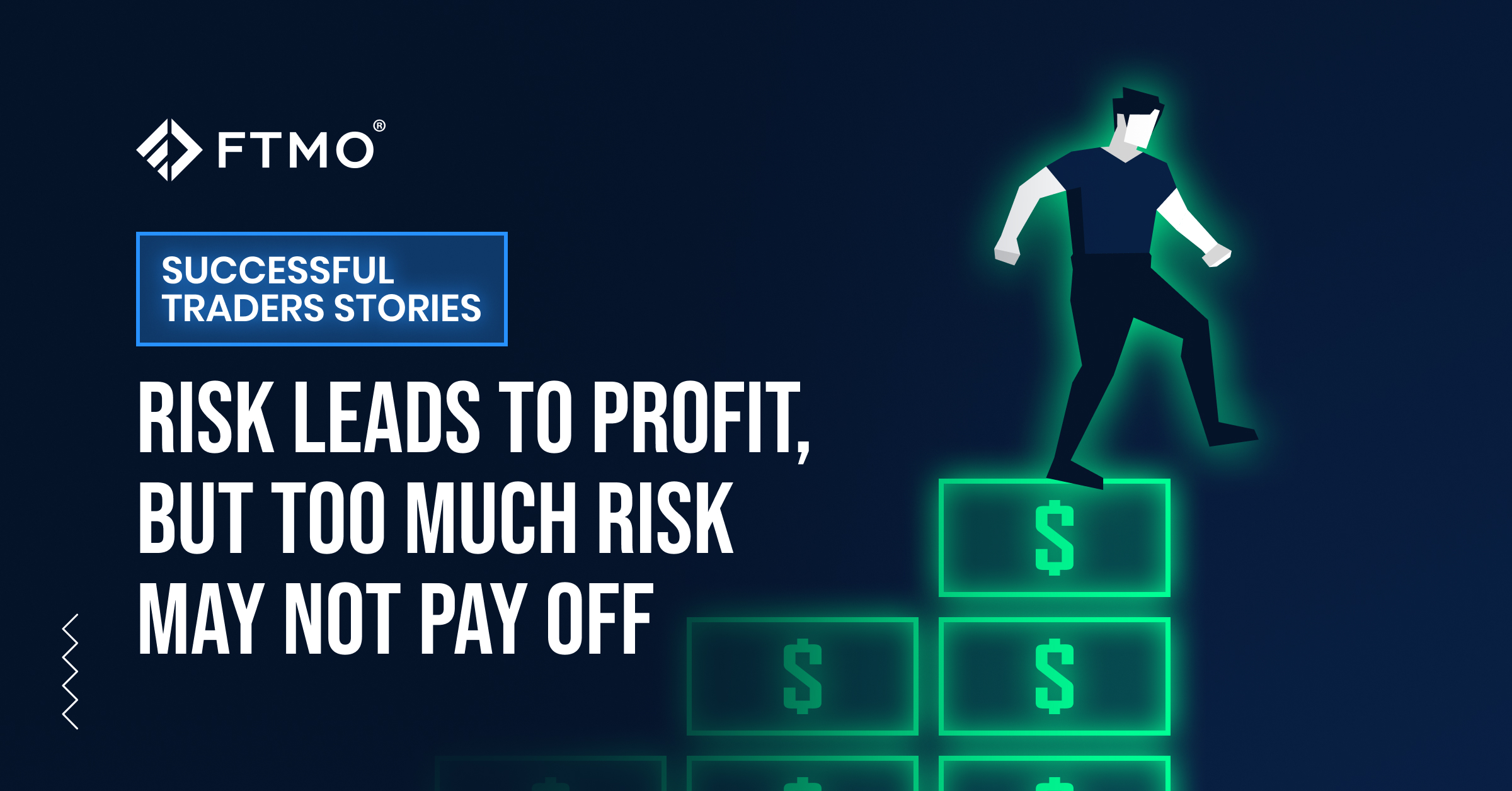
Risk leads to profit, but too much risk may not pay off
In the next part of our series evaluating successful FTMO Traders, we are reviewing two different approaches to trading. And in particular, how a poorly set Stop Loss can be risky even for potentially successful traders.
While the first trader had a slower start and did not avoid minor drops of equity on his account, his balance curve did not go into negative numbers throughout the trading period. If it was not for the four losing positions on the last day, his result could have been even better. However, due to the high consistency of results, he still managed to make very good profits.
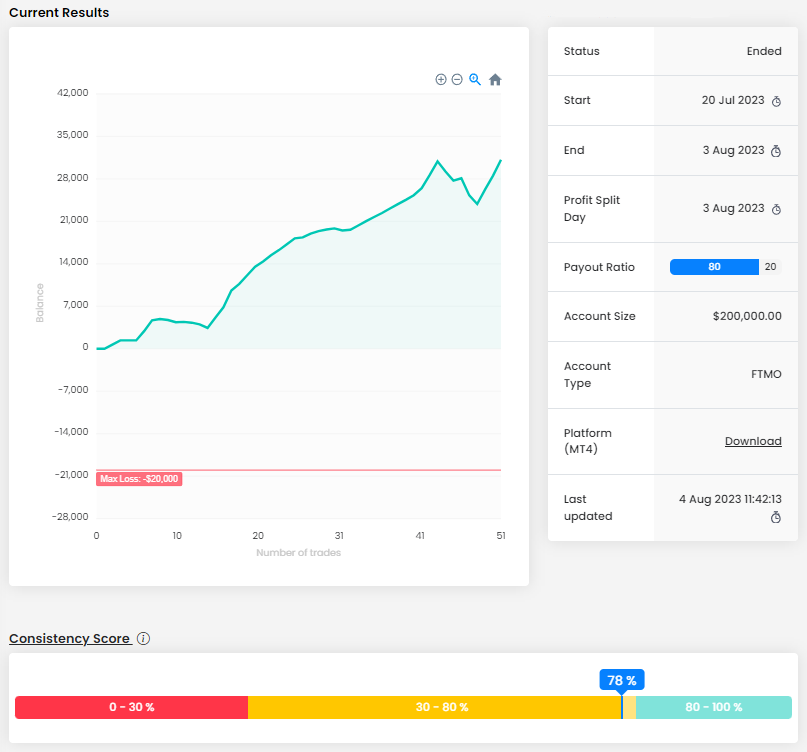
Not surprisingly, the trader had no problem with the Maximum Daily Loss and Maximum Loss limits during the trading period and the final return of over $31,000 on an account size of $200,000 is a very good result. The trader only needed 8 trading days to achieve this and his stats definitely prove his skills (or luck).

The average RRR of 1.49 is quite good and combined with the high success rate (of 74.51%) profitable trading is virtually guaranteed. As a result, there was only one day that the trader ended with a loss, and even though he took a series of losing positions during his last trading day, he ended the day with a profit of almost $6,000.
The trader opened 51 positions with a total size of almost 289 lots, an average of 5.5 lots per position. For an account size of $200,000, this is not much, but the truth is that he often opened multiple positions on one instrument at a time. Even so, the trading journal shows that the trader opened smaller positions in the beginning and increased the size of his positions as his account balance grew. This is positive. We are equally positive about the fact that he set Stop Losses for all his positions.
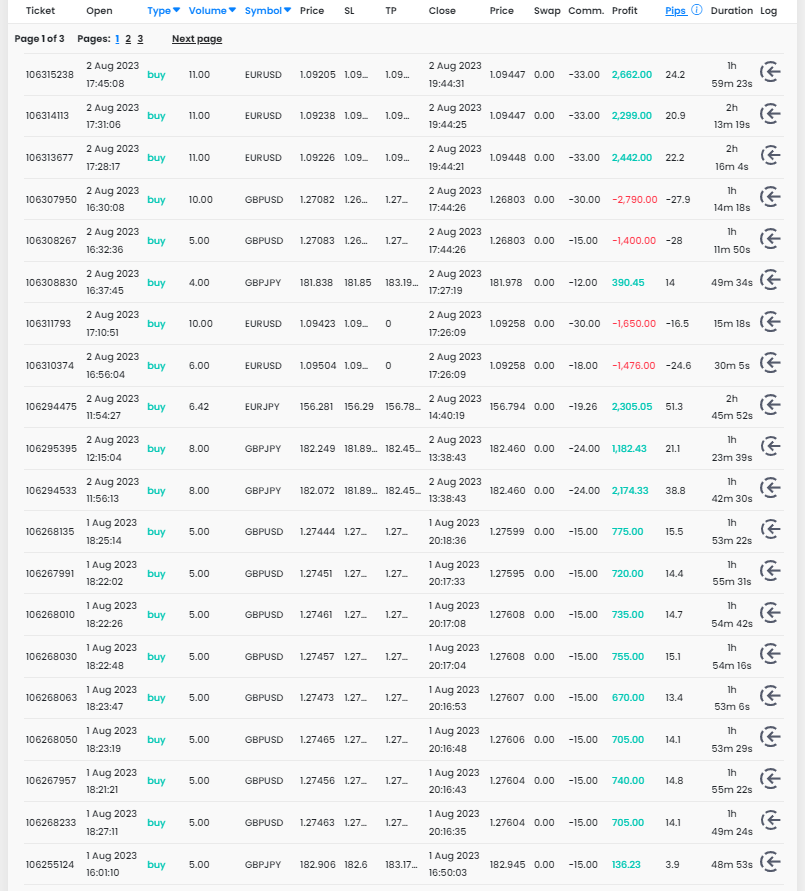
The trader sometimes accumulated positions at a loss, an approach that is not recommended for less experienced traders. Considering that the trader's loss exceeded 3% for the day only once, we can conclude that he mastered the risk management and money management skills during this trading period.
Another problem we see with this account is that in some cases the trader unnecessarily closed positions prematurely before reaching TPs (which would have been reached in some occasions). Sometimes it is good not to be too greedy and it is better to settle for a smaller profit. However, many traders unnecessarily miss out on potential returns due to this approach and it can have a bad effect on their psyche, making them start making mistakes. In this case, it worked out well in the end.
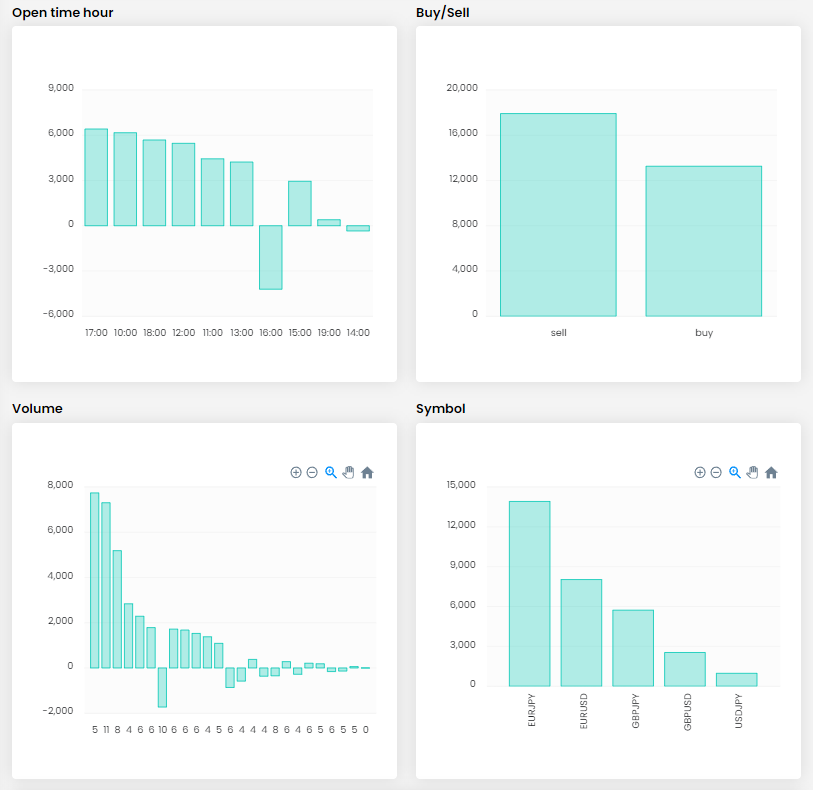
The trader opened both short and long positions and in both cases he was successful, so there is nothing to complain about here. We have also nothing bad to say about the number of instruments traded, where he traded 5 currency pairs, which is a reasonable number in terms of diversification, and at the same time the number is not too high for the trader to be able to somehow reasonably keep track of his positions and not to lose track.
The second trader had his big crisis at the beginning of the trading period but he managed to recover from it relatively well. In the end, despite his balance curve not being as "smooth" at first glance, he made even more profit than his aforementioned colleague, at just over $33,000 on an account size of $200,000. His consistency score was also higher.

It took the trader 10 trading days to make a profit of over $33,000, reaching a relatively low RRR (0.6). However, this result was helped by a very high win rate (80.60%). He is a fairly active trader who executed 67 trades for a total size of 327.3 lots, which is almost 5 lots per trade. Foran account size of $200,000 this value is not too high, and he rarely opened multiple positions on one instrument at once.
The biggest problem we see with this account is that the aforementioned drop at the beginning of the trading period could have meant the trader's account would be closed, as he came dangerously close to breaking the Maximum Daily Loss rule. In this case, the trader stopped trading, but it is not uncommon for traders to break this rule. Most of the time the limits are violated because when calculating Stop Losses, traders only include the amount they are risking on the trade itself in their calculation.
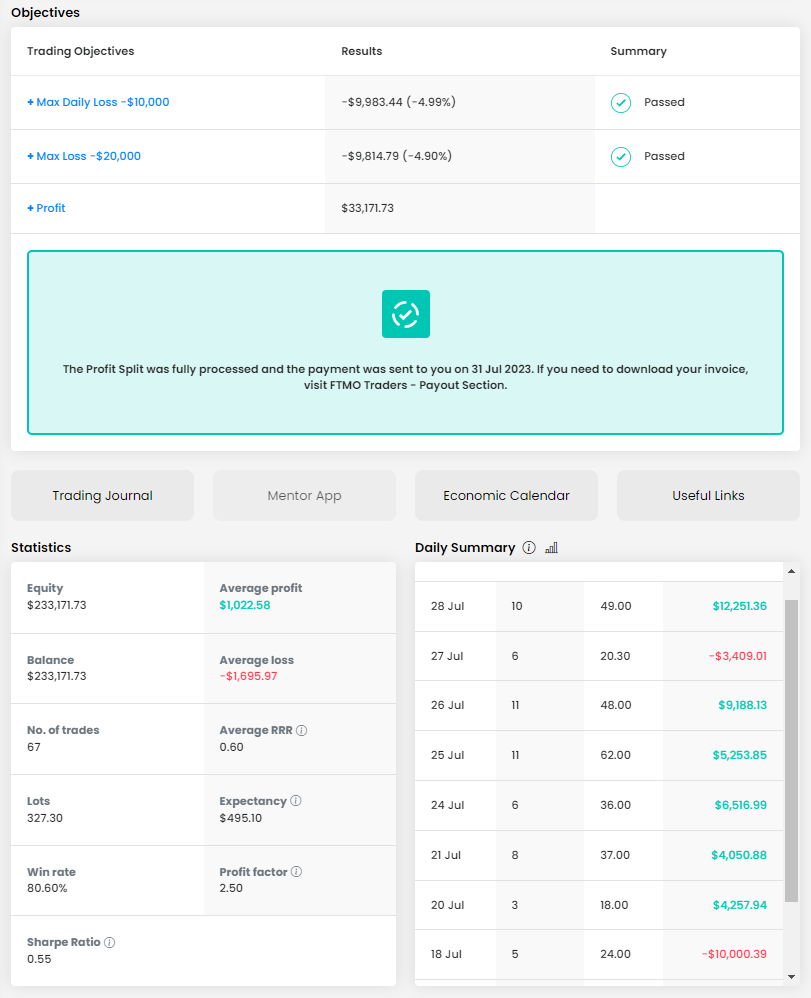
When opening positions, the trader must keep in mind that for some instruments commissions have to be added to the total potential loss amount. At the same time, it must be taken into account that when a trader holds trades overnight, he will be most likely charged a swap fee, which may also increase the total loss value.
On top of all this, one still has to take into account slippages, which can occur in the markets at virtually any time. Even without any surprising information in the market, the price may make a significant move in the "wrong direction" which will result in much bigger losses than the trader had planned. If he then has several losing trades during the day, and he risks around 1% of his account on each trade, he has to be very careful with his last position to make sure he does not exceed the Maximum Daily Loss limit.
Just like the first trader, this trader is an intraday trader as he closed most positions on the same day he had opened them, but unlike the first trader, he held some positions overnight. Again, we have to commend the trader for setting Stop Losses on all his trades, even those that lasted only a few seconds.

Again, the trader traded five instruments, but unlike the first trader, he traded the very popular gold pair in addition to the three major pairs and even attempted two trades on the exotic US dollar-Mexican peso pair. We should also note that both traders made their biggest losses on positions they opened between 16 and 17 o'clock platform time.

About FTMO
FTMO developed a 2-step Evaluation Process to find trading talents. Upon successful completion you can get an FTMO Account with a balance of up to $200,000. How does it work?.








